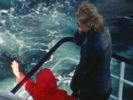Eye For Film >> Movies >> Fair Wind - Notes Of A Traveller (2013) Film Review
In August 2011, Bernadette Weigel set off from her native Vienna and headed east, with no particular destination in mind. Over the next year, she visited Romania, Ukraine, Georgia, Azerbaijan and Kazakhstan armed with a Super-8 camera. Assembling her footage into an 80-minute travelogue, Weigel – who has worked in past years with Gustav Deutsch and Michael Haneke – has made her directorial debut with a succession of moving-image postcards that might be described as both a snapshot and a product of its age.
Weigel opens her film with a quotation from German writer Alfred Döblin: “But the essence of the human being are his [sic] eyes and his feet. One must be able to see the world and walk towards it.” Of course, anyone privileged enough to travel the world is perhaps in no position other than to fall in love with it, which might account for why Weigel seemingly has so little to say. What new insights are to be found? One is tempted to ask here why any of us should care that another person has gone to see the world and has brought us back pictorial evidence of her adventures.

The emphasis in Fair Wind - Notes Of A Traveller (Fahrtwind - Aufzeichnungen Einer Reisenden) is on surface textures. Weigel’s imagery has an appreciably rugged edge – colourfully vivid on the one hand but ethereally retro on the other. There is also a palpable disconnect between sound and image, which draws attention to those strangely exotic sounds of which an outsider’s senses are especially aware: barking dogs, ocean waves, the flow of a river, a wood pigeon, the cry of a mosque. Ironically, however, there are few actual notes in the film. Impressions are often evoked through association, such as when nuns sing over an image of far-off hills. At other points, Weigel finds much joy in the simplicity of things, like a local child’s smile and laughter, or two nuns being repeatedly lifted into the air by the bells they’re ringing.
Likewise, there’s little (to be) said about the several instances here in which animals are killed. Weigel lingers on moments in which a sheep’s or a pig’s throat is cut with a detached curiosity. At a market, fish can be seen twitching on a stall. This is, as is mentioned early on, “the unknown” – pretty unfathomable and unfathomably pretty. But compare the film to, say, Ron Fricke’s Baraka (1992) or Samsara (2011), and as a document of different customs it begins to look rather ordinary. Even if we haven’t been to these places before, in some way we have already seen them. It’s fair enough that Weigel wants us to “fall in love with the world at first sight”, but that surely doesn’t preclude questioning or commenting upon it.
Reviewed on: 20 Jun 2013
















